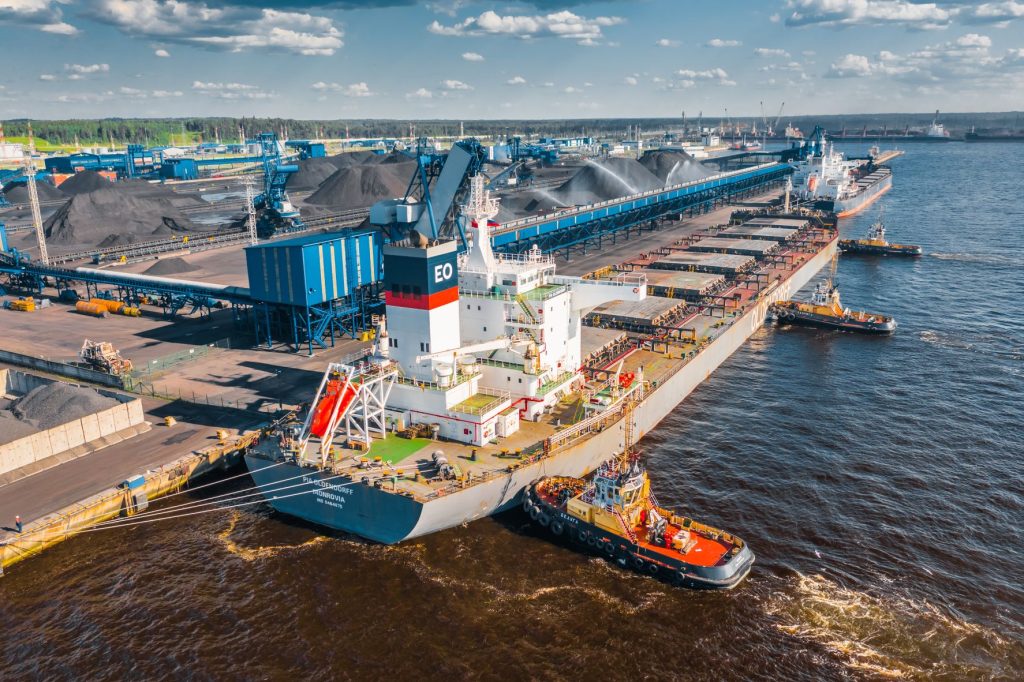

Over the past week, coal prices on the Atlantic market dropped further below 185 USD/t. The European indices are under pressure from weak consumers demand, caused by the ongoing warm weather (average daily temperature in Berlin is expected to stay 1-6°C above normal through this week), as well as stable wind generation and growing coal inventories at ARA terminals, totaling 7.1 mio t (+0.1 mio t w-o-w).
High-CV South African 6,000 tumbled below $175/t last week, following the European market. On November 08, 2022, there was a train derailment on the railway line, leading to Richards Bay Coal Terminal (RBCT). According to the local freight rail operator Transnet, the railroad to the coal terminal is blocked, while heavy rains hamper recovery works. The exact date for supply resumption is currently unknown. Coal stocks at Richards Bay port stood at 3.2 mio t. The accident on the Transnet railway line has not provided any support to the indices so far.
In China, spot prices for 5,500 NAR at the port of Qinhuangdao fell to 216 USD/t (-7 USD/t w-o-w). Chinese consumers remain focused on Low-CV Indonesian 3,000-3,400 NAR. The material is blended with domestically produced coal, which is shipped under long-term contracts. Warm weather in November, as well as improved coal shipments from Inner Mongolia and Shaanxi provinces, eased fears of insufficient supply for the coming winter. According to market participants, Chinese zero Covid policy is currently hurting coal demand even more than coal supply. Furthermore, the National Meteorological Centre forecasts average daily temperatures in China to be above the seasonal norm until mid-January 2023.
The National Development and Reform Commission of China (NDRC) aims to increase the production plan for 2023 in the key coal-mining provinces of Inner Mongolia, Shanxi and Shaanxi. The regulator’s goal is to ensure required coal volumes for the energy sector under long-term contracts. As a consequence, NDRC’s initiative may decrease the availability of domestically produced coal on the spot market.
Indonesian 5,900 GAR slipped to 177 USD/t. Local authorities released an order, requiring 125 mining companies in the country to supply the domestic market with 161 mio t of coal in 2023. In comparison, coal consumption by energy companies in 2022 is forecasted at 130 mio t. This way, the government intends to avoid a repeating of the scenario seen at the beginning of 2021, when the 28-day coal export ban was imposed on January 01. According to the current legislation, Indonesian producers have to supply 25% of their coal production to domestic companies, while the failure to meet the obligations leads to a cut in production and export quotas for the next operational year.
High-CV Australian 6,000 coal prices slumped below 330 USD/t, tracking the downtrend in the Atlantic market. Long-term meteorological forecasts for Japan, Korea and Taiwan suggest a lower likelihood of harsh winter weather, which in turn reduces spot demand as utilities have built up sufficient inventories by now.
Shrinking demand for energy supplies in the Asia-Pacific is also confirmed by lower LNG prices. While August quotes were as high as 71.3 USD/MMBtu (which coincided with heavy buying of Australian coal ahead of heating season), the futures for December LNG deliveries to Asia are now trading at 27.2 USD/MMBtu.
Australian metallurgical coal indexes climbed above USD 310/t, narrowing the gap with thermal coal prices.
Source: CAA









